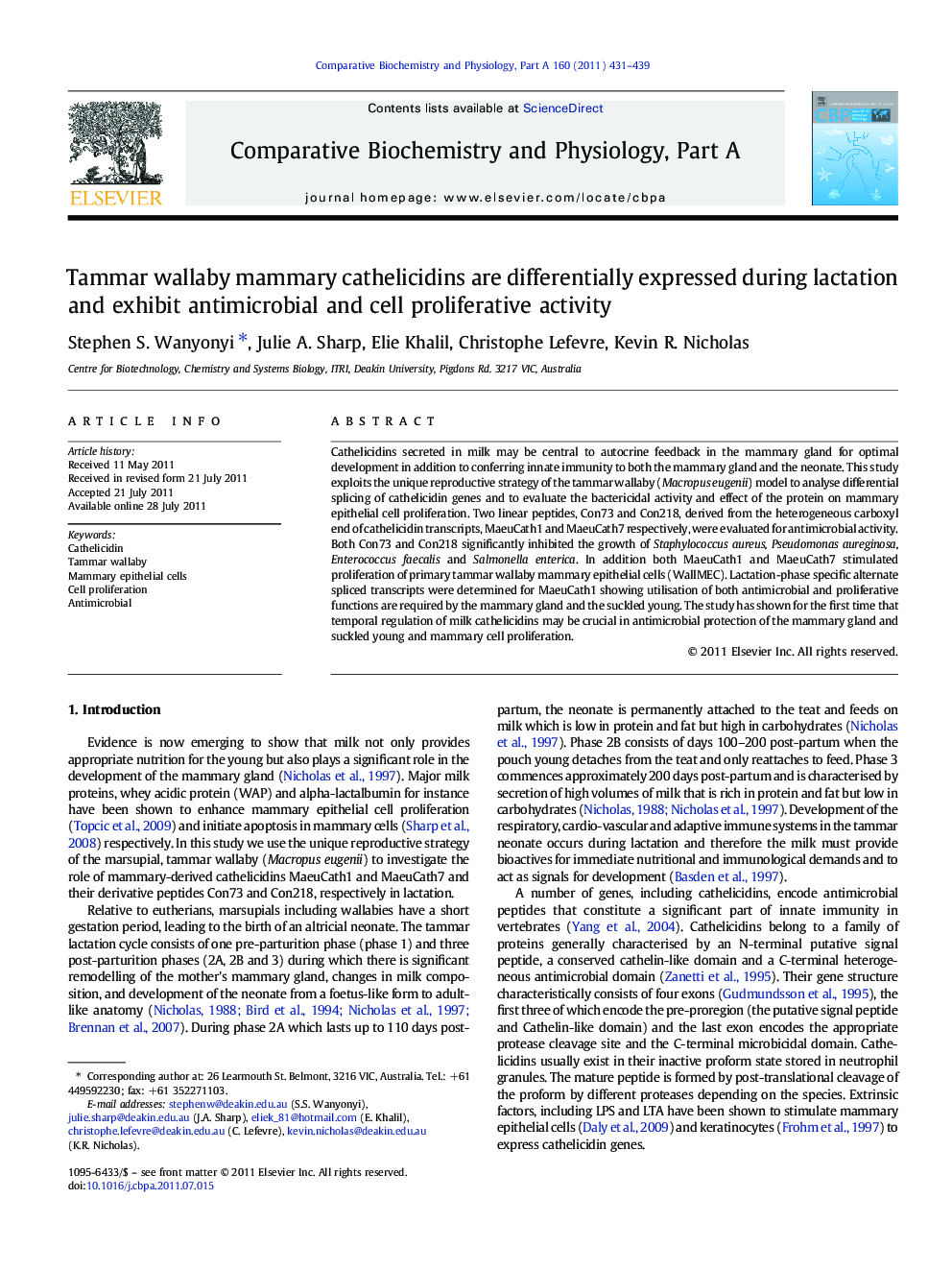| Article ID | Journal | Published Year | Pages | File Type |
|---|---|---|---|---|
| 1973044 | Comparative Biochemistry and Physiology Part A: Molecular & Integrative Physiology | 2011 | 9 Pages |
Abstract
Cathelicidins secreted in milk may be central to autocrine feedback in the mammary gland for optimal development in addition to conferring innate immunity to both the mammary gland and the neonate. This study exploits the unique reproductive strategy of the tammar wallaby (Macropus eugenii) model to analyse differential splicing of cathelicidin genes and to evaluate the bactericidal activity and effect of the protein on mammary epithelial cell proliferation. Two linear peptides, Con73 and Con218, derived from the heterogeneous carboxyl end of cathelicidin transcripts, MaeuCath1 and MaeuCath7 respectively, were evaluated for antimicrobial activity. Both Con73 and Con218 significantly inhibited the growth of Staphylococcus aureus, Pseudomonas aureginosa, Enterococcus faecalis and Salmonella enterica. In addition both MaeuCath1 and MaeuCath7 stimulated proliferation of primary tammar wallaby mammary epithelial cells (WallMEC). Lactation-phase specific alternate spliced transcripts were determined for MaeuCath1 showing utilisation of both antimicrobial and proliferative functions are required by the mammary gland and the suckled young. The study has shown for the first time that temporal regulation of milk cathelicidins may be crucial in antimicrobial protection of the mammary gland and suckled young and mammary cell proliferation.
Related Topics
Life Sciences
Biochemistry, Genetics and Molecular Biology
Biochemistry
Authors
Stephen S. Wanyonyi, Julie A. Sharp, Elie Khalil, Christophe Lefevre, Kevin R. Nicholas,
